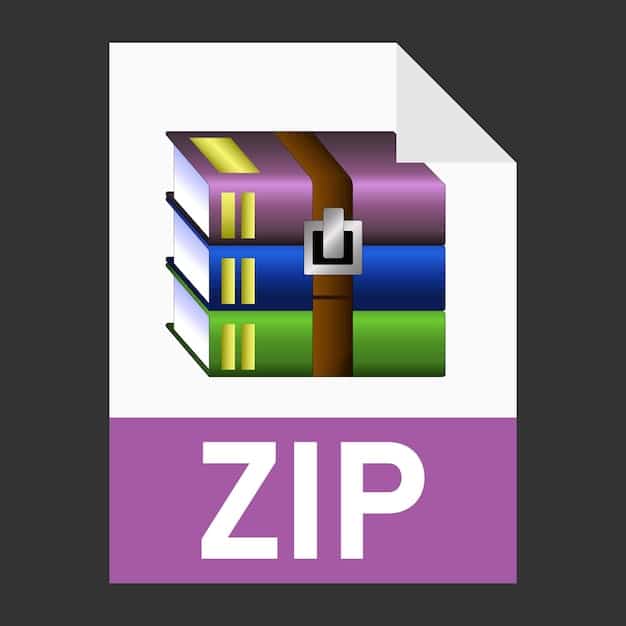E-commerce Platform Performance: Reduce US Page Load Time by 50%

E-commerce Platform Performance: Reduce Your US Page Load Time by 50% with These Optimization Tips is crucial for enhancing user experience and boosting conversion rates; implementing strategies like image optimization, code minification, and leveraging browser caching can significantly improve website loading speeds.
Do you want to reduce your US e-commerce platform performance: reduce your US page load time by 50% with these Optimization Tips? Slow loading times on your e-commerce site can kill your conversion rates and frustrate your customers. Don’t let a sluggish website hold you back – discover actionable optimization tips to significantly improve your site’s speed and deliver a seamless shopping experience.
Understanding the Importance of Page Load Time for US E-commerce
Page load time is more than just a technical metric; it directly impacts your bottom line in the competitive US e-commerce market. Customers expect fast and responsive websites, and if your site lags, they’ll quickly bounce to a competitor. This makes optimizing your page load time a critical business imperative.
The Impact on User Experience
A slow website creates a frustrating user experience. Imagine browsing a store where every item takes ages to load – you’d likely leave. The same applies to online shopping. A study by Akamai found that 53% of mobile site visitors leave a page that takes longer than three seconds to load.
Conversion Rate Implications
Slow page load times directly correlate to lower conversion rates. Research indicates that even a one-second delay can result in a 7% reduction in conversions. For a business doing significant sales, this translates to a substantial loss in revenue. Optimizing your site speed is an investment that pays off in increased sales.
- Improved Search Engine Rankings: Google considers page speed as one of its ranking factors, so faster sites tend to rank higher in search results.
- Reduced Bounce Rate: Visitors are more likely to stay on a site that loads quickly, reducing bounce rates and increasing time on site.
- Enhanced Customer Satisfaction: A seamless, fast browsing experience keeps customers happy and increases the likelihood of repeat purchases.
In summary, prioritizing page load time is essential for retaining customers, boosting conversions, and remaining competitive in the US e-commerce landscape. Ignoring this aspect can lead to lost revenue opportunities and a diminished brand reputation.
Analyzing Your Current Page Load Time
Before implementing any optimization strategies, it’s essential to understand your current page load time. Several tools can help you measure and analyze your website’s performance, providing valuable insights into areas that need improvement. This analysis is the foundation for an effective optimization plan.
Popular Speed Testing Tools
Tools like Google PageSpeed Insights, GTmetrix, and WebPageTest offer comprehensive analysis of your website’s speed. Google PageSpeed Insights provides recommendations specific to mobile and desktop platforms, while GTmetrix offers detailed performance reports and waterfall charts. WebPageTest allows you to run tests from various locations and browsers, giving you a realistic view of user experience.
Key Metrics to Monitor
When analyzing your page speed, focus on critical metrics like First Contentful Paint (FCP), Largest Contentful Paint (LCP), and Time to Interactive (TTI). FCP measures the time it takes for the first piece of content to appear on the screen, whereas LCP gauges how long it takes for the main content to load. TTI indicates when the page becomes fully interactive. Monitoring these metrics will help you pinpoint performance bottlenecks.

A structured approach to analyzing your page load time enables you to make informed decisions and prioritize optimization efforts. By using the right tools and metrics, you can identify areas where your website is underperforming and tailor your strategies accordingly. Regular monitoring ensures a consistent and optimal user experience.
Optimizing Images for Faster Load Times
Images often constitute a significant portion of a website’s total size, especially on e-commerce platforms where visuals are crucial for showcasing products. Optimizing images can dramatically reduce page load times without sacrificing visual quality. This involves choosing the right file formats, compressing images, and implementing lazy loading techniques.
Choosing the Right File Formats
Selecting the appropriate image file format is critical for optimization. JPEG is ideal for photographs and complex images due to its compression capabilities, whereas PNG is best for graphics, logos, and images with text, as it preserves clarity. WebP is a modern image format that offers superior compression and quality compared to JPEG and PNG, but it may not be supported by all browsers.
Compression Techniques
Compressing images reduces their file size without visibly affecting quality. Tools like TinyPNG, ImageOptim, and ShortPixel can efficiently compress images. Lossy compression reduces file size by discarding some data, while lossless compression maintains all original data. Use lossy compression for photographs and lossless for essential graphics.
- Resizing Images: Ensure images are appropriately sized for their intended display. Uploading excessively large images can slow down page load times significantly.
- Lazy Loading: Implement lazy loading, where images are loaded only when they are visible in the viewport. This technique reduces the initial load time and improves user experience.
- Using CDNs: Employ a Content Delivery Network (CDN) to serve images from servers located closer to your users, reducing latency and speeding up delivery.
Optimizing images is a straightforward yet impactful strategy for improving e-commerce platform performance. By selecting the right file formats, compressing images effectively, and employing lazy loading, you can enhance user experience and boost conversion rates. Regular image optimization should be an integral part of your website maintenance routine.
Minifying and Compressing Code
Minifying and compressing code are essential techniques for reducing the size of your website’s files, leading to faster load times. Removing unnecessary characters, whitespace, and comments from HTML, CSS, and JavaScript files makes them smaller and quicker to transmit over the network. Gzip compression further reduces file sizes during transmission.
Why Minification Matters
Minification involves removing unnecessary elements from code without changing its functionality. This reduces the amount of data that needs to be transferred, resulting in faster page load times. Minifying HTML, CSS, and JavaScript files can lead to significant performance improvements, especially for large codebases.
The Benefits of Gzip Compression
Gzip compression reduces the size of files by encoding them before transmission and decoding them on the user’s browser. This technique significantly reduces the amount of data transferred, leading to faster load times. Enabling Gzip compression on your server is a simple yet effective way to optimize your website’s performance.

Implementing minification and compression is a critical step in optimizing your e-commerce platform. By reducing the size of your code files, you can improve page load times, enhance user experience, and boost overall website performance. These techniques are particularly beneficial for mobile users with slower internet connections.
Leveraging Browser Caching for Repeat Visitors
Browser caching is a technique that allows web browsers to store static files, such as images, CSS, and JavaScript, on a user’s device. When a user revisits your website, the browser can retrieve these files from its cache instead of downloading them again, resulting in significantly faster load times for repeat visitors. Properly configuring browser caching can greatly improve user experience.
How Browser Caching Works
When a user visits your website for the first time, the browser downloads all necessary files. With browser caching enabled, these files are stored locally on the user’s device. On subsequent visits, the browser checks its cache for these files and retrieves them if they haven’t expired, avoiding the need for a new download. This reduces server load and speeds up page load times.
Configuring Cache Headers
To enable browser caching, you need to configure cache headers on your web server. These headers tell the browser how long to store specific files. Common cache headers include `Cache-Control`, `Expires`, and `ETag`. The `Cache-Control` header is the most versatile and allows you to specify caching directives such as `max-age` (how long to store the file) and `public` or `private` (who can cache the file).
- Set Appropriate Cache Expiration Times: Determine how long static files should be cached based on how frequently they are updated. Longer expiration times are suitable for files that rarely change.
- Use a Content Delivery Network (CDN): CDNs improve browser caching by storing files on multiple servers worldwide, reducing latency and speeding up content delivery.
- Regularly Review Cache Settings: Ensure your cache settings are up to date and optimized for your website’s content. Periodically review and adjust these settings as needed.
Leveraging browser caching is a fundamental strategy for optimizing website performance, particularly for repeat visitors. By properly configuring cache headers and utilizing CDNs, you can significantly reduce page load times and improve user experience. This leads to increased engagement, higher conversion rates, and a more satisfied customer base.
Choosing the Right E-commerce Platform and Hosting
The e-commerce platform and hosting you choose play a crucial role in your website’s performance. Some platforms are inherently faster and more optimized than others. Similarly, choosing a reliable hosting provider with adequate resources is essential for handling traffic and ensuring fast load times. Making informed decisions in these areas can significantly impact your site’s speed.
Platform Considerations
Popular e-commerce platforms like Shopify, WooCommerce, and Magento have different performance characteristics. Shopify is known for its ease of use and scalability, while WooCommerce offers flexibility and customization on WordPress. Magento is a robust platform suited for large enterprises. Evaluate the performance capabilities of each platform before making a choice.
Hosting Options
The type of hosting you choose can greatly affect your website’s speed and reliability. Shared hosting is the most affordable option, but it can suffer from performance issues due to shared resources. VPS hosting provides more resources and better performance, while dedicated hosting offers the highest level of control and performance. Cloud hosting provides scalability and reliability by distributing resources across multiple servers.
Selecting the right e-commerce platform and hosting is a critical decision that can significantly impact your website’s performance. By carefully evaluating your options and aligning them with your specific needs, you can ensure that your site delivers a fast and seamless shopping experience. This, in turn, leads to increased customer satisfaction and higher conversion rates.
| Key Point | Brief Description |
|---|---|
| 🚀 Optimize Images | Use proper formats, compress, and lazy load. |
| 💡 Minify Code | Remove unnecessary characters and compress code. |
| 🌐 Leverage Caching | Utilize browser caching for repeat visitors. |
| ☁️ Choose Right Hosting | Select a hosting plan that suits your needs. |
Frequently Asked Questions
▼
Faster page load times improve user experience, reduce bounce rates, and increase conversion rates. A faster site keeps customers engaged and more likely to make a purchase.
▼
Use tools like Google PageSpeed Insights, GTmetrix, or WebPageTest to analyze your site’s performance. These tools provide valuable insights and recommendations for improvement.
▼
JPEG is great for most product photos. PNG is best for logos and graphics. WebP is a modern format offering superior compression and quality, if supported.
▼
Code minification removes unnecessary characters and whitespace from code, reducing file sizes and improving page load times. It helps in speeding up the site.
▼
Browser caching stores static files on users’ devices, so they don’t have to download them again on subsequent visits. It significantly speeds up load times for repeat visitors making user experience better.
Conclusion
Optimizing your e-commerce platform’s performance is crucial for providing a seamless user experience and boosting sales. By implementing the strategies discussed – such as optimizing images, minifying code, leveraging browser caching, and choosing the right platform and hosting – you can significantly reduce page load times and increase customer satisfaction. Start implementing these tips today to see a tangible improvement in your e-commerce platform’s performance within the US market.





